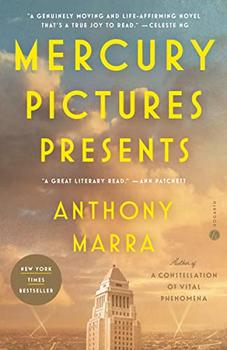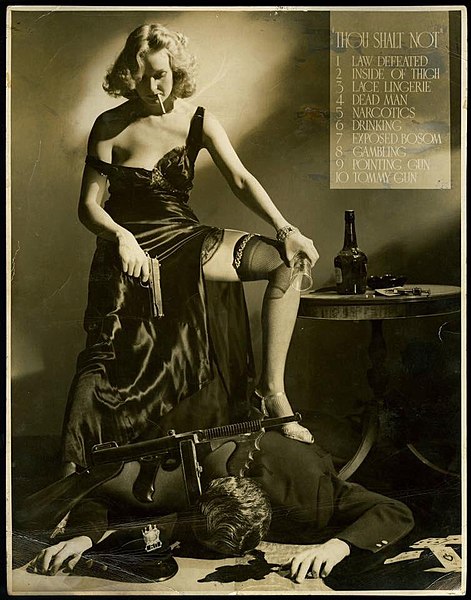Summary | Excerpt | Reading Guide | Discuss | Reviews | Beyond the Book | Read-Alikes | Genres & Themes | Author Bio

A Novel
by Anthony MarraThis article relates to Mercury Pictures Presents
 In Anthony Marra's novel Mercury Pictures Presents, the main characters struggle to ensure their movies adhere to the Motion Picture Production Code.
In Anthony Marra's novel Mercury Pictures Presents, the main characters struggle to ensure their movies adhere to the Motion Picture Production Code.
In the early years of the 20th century, as motion pictures were becoming increasingly available to the American public, some segments of the population expressed the opinion they were promoting depravity. In 1915, the Supreme Court ruled that the First Amendment (protecting freedom of expression) didn't apply to movies, and individual cities began to ban films they deemed immoral. During the 1920s, the Catholic church considered banning films entirely (meaning prohibiting adherents of the faith from attending any movie).
Fearing such a ban would impact profits and concerned about the potential of a government crackdown, Hollywood executives created the Motion Picture Producers and Distributors Association (MPPDA) with Will Hays as its president. The organization's purpose was to enforce a standard of "moral decency," and they set about creating a code that would outline what could and couldn't be shown in movie theaters. The resulting set of values, written by Martin Quigley (an editor and publisher) and Jesuit Reverend Daniel Lord, was the Production Code (also known as the Hays Code), adopted by the MPPDA in 1930. Although adhering to the code wasn't mandatory, non-code pictures were subject to a $25,000 fee (nearly half a million dollars in today's economy). The Production Code was consequently applied to nearly all American-made films from 1934 to the mid-1950s.
The code espoused three general principles:
The twelve sections following these general principles outlined treatment of subjects such as murder, drugs and alcohol, sex, profanity, religion, dancing and attire, among other things. In the section addressing homicide, for example, the rules stated that a murder technique shouldn't be so explicit that it would inspire someone to copy it, and that brutal killings should not be presented in detail. The rules about how sexuality could be presented were extensive.
The Production Code had an enormous impact. Alfred Hitchcock's adaptation of Daphne du Maurier's novel Rebecca (1940) had to change a major plot element because in the book one of the characters has gotten away with murder (a definite Production Code no-no). Joseph Breen, head of the Production Code Administration (the body tasked with enforcement of censorship), had many issues with Casablanca (1942), particularly its sexual content: Changes were made regarding Captain Renault selling exit visas to women in exchange for sex, and the specifics of how Rick's affair with Ilsa, a married woman, was depicted. But he also objected to its perceived encouragement of lawlessness. In an earlier filming of a scene, Rick shot Major Strasser in the back, making the hero a murderer; it had to be rewritten to have Strasser pull a gun first. Not even cartoons were exempt; Betty Boop was given a Production Code makeover in the mid-1930s — making her look older, lengthening her skirt and flattening some of her curves.
The beginning of the end of the Production Code came in 1952, when the Supreme Court reversed the decision about movie censorship with its ruling on Burstyn v. Wilson. In the meantime, the atmosphere surrounding cinema was undergoing gradual changes. Foreign films, which weren't subject to the Production Code, were becoming increasingly popular. The sexual revolution during the 1960s led to a demand for fewer restrictions on sex-based content. In 1968, the Production Code was replaced by a voluntary rating system that would indicate how appropriate a movie would be for children and its censorship of film content came to an end.
Thou Shalt Not, 1940 photograph by Whitey Schafer created to protest the Production Code/Hays Code
Filed under People, Eras & Events
![]() This "beyond the book article" relates to Mercury Pictures Presents. It originally ran in August 2022 and has been updated for the
June 2023 paperback edition.
Go to magazine.
This "beyond the book article" relates to Mercury Pictures Presents. It originally ran in August 2022 and has been updated for the
June 2023 paperback edition.
Go to magazine.
Discovery consists of seeing what everybody has seen and thinking what nobody has thought.
Click Here to find out who said this, as well as discovering other famous literary quotes!
Your guide toexceptional books
BookBrowse seeks out and recommends the best in contemporary fiction and nonfiction—books that not only engage and entertain but also deepen our understanding of ourselves and the world around us.